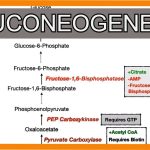Recombinant DNA, which is often shortened to rDNA, is an artificially made DNA strand that is formed by the combination of two or more gene sequences. This new combination may or may not occur naturally, but is engineered specifically for a purpose to be used in one of the many applications of recombinant DNA.
Background Information on DNA
DNA, also known scientifically as deoxyribonucleic acid, has a double helix structure and contains a combination of the nitrogen bases: adenine, thymine, guanine and cytosine. Although these four bases are the same in all organisms, they can be paired together and arranged in an infinite number of ways, such that each organism has a unique combination for their DNA strands.
Recombinant DNA
Recombinant DNA, or rDNA, is the term used to describe the combination of two DNA strands that are constructed artificially. Genetic scientists can do this to create unique DNA strand for different purposes, using several types of techniques.
Like naturally occurring DNA, recombinant DNA has the ability to produce recombinant proteins. It is often these proteins that play the key role in the application of recombinant DNA.
Formation of rDNA
In most cases, rDNA is created in a laboratory setting using a process of molecular cloning. This method allows in vivo DNA replication, in the living cells of the subject.
A cloning vector is a DNA molecule that replicates inside a living cell and is used to form rDNA. The cloning vector is usually a small part of a DNA strand that holds the genetic information that is needed for the replication of cells. Polymerase chain reaction (PCR) is another method that can be used to replicate a specific DNA sequence and create rDNA, which is used to replicate DNA in a laboratory test tube.
The standard method of making recombinant DNA involves:
- Choosing the appropriate host organism and cloning vector.
- Preparation of vector DNA and DNA to be cloned.
- Creation of recombinant DNA.
- Introduction of rDNA to host organism.
- Screening for rDNA with specific properties sought from host organisms.
Historical Overview
Peter Lobban and A. Dale Kaiser were the first scientists to propose a technique to form recombinant DNA. This soon caught on to other scientists and in 1972 the first paper that detailed a new way to insert genetic information using E. coli was released. Soon after in 1973, several other papers followed building on the concept and adding techniques of construction and formation.
In 1978, Werner Arber, Daniel Nathans and Hamilton Smith were awarded the Nobel Prize in Medicine for creating technology to discover, isolate and apply rDNA. Since this time, recombinant genes and proteins have become widely used in medicine and agriculture. This offers a novel method of managing some health conditions, such as the use of recombinant insulin in diabetes, as well pest-control for gardens and farms.


